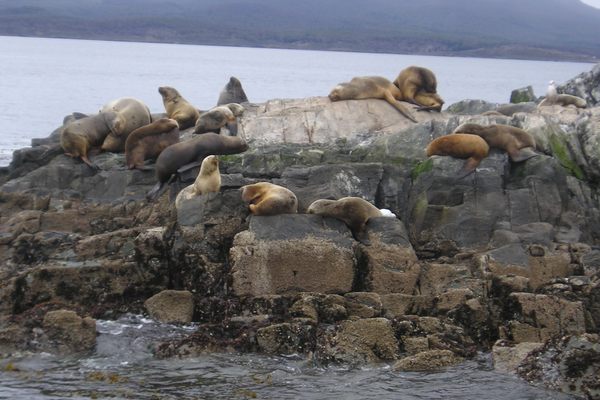Puente Laguna Garzón
Because sometimes the most efficient route from A to B isn't a straight line.
When Uruguay’s Rocha and Maldonado counties sought to replace the tried-and-true way of crossing Laguna Garzón–by single-vehicle float rafts – they leapt straight for a plan that became one of the most immediately recognizable bridges in the world today.
After six years of public hearings and negotiations with the local communities, Rafael Viñoly Architects (the same firm responsible for 432 Park Avenue’s delicate tower, the space-age Carrasco Airport, Princeton University’s athletics stadium, and more) found a way to meet the strict needs of the natural and cultural communities connected by the new bridge. The project’s success hinged upon its ability to incorporate the sensitive laws of the area, which, according to primary funder Eduardo Constantini, stipulate that just 35% of the stretch between the lagoons could be developed, while 50% must be devoted to green areas.
These prolonged negotiations created a truly forward-thinking piece of engineering, opened to the public in September of 2015. The mile-long Laguna Garzón Bridge is among the most unusual in the world thanks to an empty, near-perfect circle at its center. Born equally of safety concerns – the road’s complementary one-way half-circles force motorists to slow down, thereby breaking up the mile-long stretch that otherwise might have been a tantalizing speedway – and of a need for amusement – it boasts an observation deck-and-fishing pier – the bridge has already gained international acclaim for its design.
Already crossed by more than 1,000 vehicles each day, the bridge is poised to become not only a significant upgrade from the lagoon’s floating predecessor, but is set to become a destination in its own right. Though it cost an estimated $11 million to complete, the bridge that created a “lagoon inside a lagoon” has since linked communities both locally and internationally, while responsibly creating an entry to the surrounding natural world where previously there had been none; in the modern world, where connectivity is everything and returns to nature are so rarely done, you decide whether a few million is a worthy price for such grace.



















Follow us on Twitter to get the latest on the world's hidden wonders.
Like us on Facebook to get the latest on the world's hidden wonders.
Follow us on Twitter Like us on Facebook